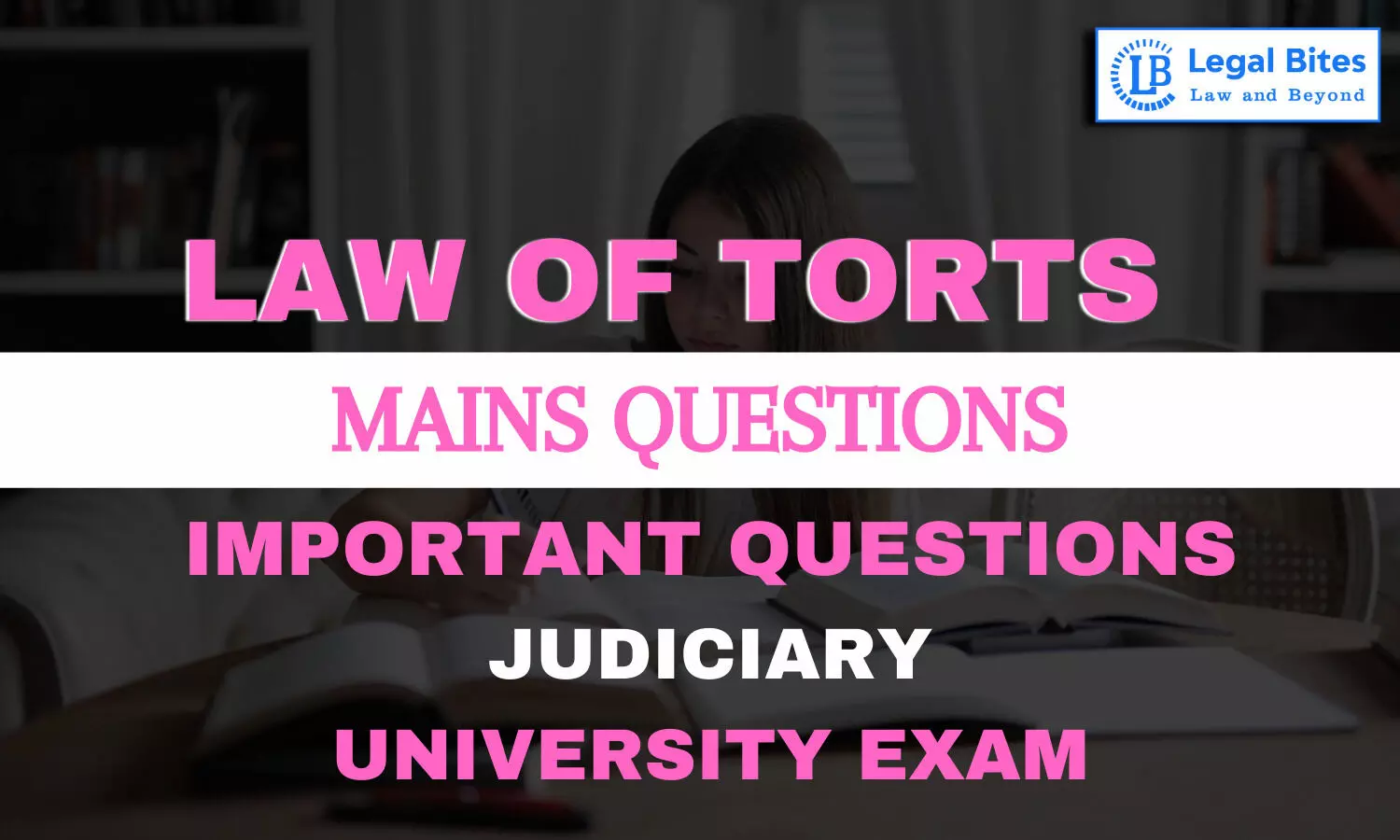How does Lord Campbell define 'malice'? Explain what is meant by 'malice in law.' Cite cases in support of your answer.
Find the question and answer of Law of Torts only on Legal Bites.;

Question: How does Lord Campbell define 'malice'? Explain what is meant by 'malice in law.' Cite cases in support of your answer.Find the question and answer of Law of Torts only on Legal Bites. [How does Lord Campbell define 'malice'? Explain what is meant by 'malice in law.' Cite cases in support of your answer.]AnswerLord Campbell defined "malice" as the intention to do harm or the reckless disregard for the consequences of one's actions, which may result in harm to others. This...
Question: How does Lord Campbell define 'malice'? Explain what is meant by 'malice in law.' Cite cases in support of your answer.
Find the question and answer of Law of Torts only on Legal Bites. [How does Lord Campbell define 'malice'? Explain what is meant by 'malice in law.' Cite cases in support of your answer.]
Answer
Lord Campbell defined "malice" as the intention to do harm or the reckless disregard for the consequences of one's actions, which may result in harm to others. This definition refers to a specific state of mind in which an individual intends to cause harm or acts with a disregard for the potential harm that their actions may cause.
In legal contexts, malice can refer to a specific state of mind that is necessary to prove certain types of crimes, such as murder or defamation. For example, malice aforethought is the specific intent to kill someone or cause them serious harm, which is required for a charge of first-degree murder.
"Malice in law" is a legal term that refers to a situation where an individual's actions are considered to be motivated by malice, even if there was no actual intent to harm anyone. This concept arises in situations where malice is a necessary element for a particular type of claim or offence, such as defamation or malicious prosecution.
Malice in law is expressed as implied malice, where the wrongful intention is presumed concerning the unlawful act. Lord Campbell calls malice in law a 'conscious violation of the law to the prejudice of another' Whereas, malice, in fact, is called express malice.
In tort law, malice in law (also known as legal malice) refers to a situation where an individual's actions are motivated by malice or ill-will towards the plaintiff, even if there was no actual intent to cause harm. This type of malice is considered to be implied malice, meaning that it is inferred from the circumstances surrounding the defendant's actions.
Malice in law is relevant in several torts, including defamation, malicious prosecution, and abuse of process. In these cases, the plaintiff must prove that the defendant acted with malice in order to succeed in their claim.
For example, in a defamation case, the plaintiff must show that the defendant made a false and defamatory statement about them and that the statement was made with malice. Malice in this context means that the defendant knew the statement was false or acted recklessly in making the statement without regard for its truth or falsity.
Similarly, in a malicious prosecution case, the plaintiff must show that the defendant instituted legal proceedings against them with malice, meaning that the defendant had no reasonable or probable cause to believe that the plaintiff had committed a crime or offence.
Overall, malice in law is an important concept in tort law as it allows plaintiffs to seek damages for the harm caused by a defendant's actions that were motivated by malice or ill-will, even if there was no actual intent to cause harm.
There are several landmark tort law cases that involve the concept of malice, including:
New York Times Co. v. Sullivan, [376 U.S. 254 (1964)]: This case involved a libel suit against the New York Times by an Alabama public official, L.B. Sullivan. The Supreme Court held that in order for a public official to recover damages for a defamatory falsehood relating to his official conduct, he must prove that the statement was made with "actual malice" - that is, with the knowledge that it was false or with reckless disregard of whether it was false or not.
Hustler Magazine, Inc. v. Falwell, 485 U.S. 46 (1988): In this case, televangelist Jerry Falwell sued Hustler magazine for intentional infliction of emotional distress after the magazine published a parody advertisement that portrayed Falwell as having a drunken incestuous encounter with his mother in an outhouse. The Supreme Court held that the First Amendment protects speech that is outrageous, offensive, and even hurtful, as long as it does not amount to defamation or intentional infliction of emotional distress, and that a public figure like Falwell must prove actual malice to recover damages for such speech.
Smith v. Wade, 461 U.S. 30 (1983): This case involved a civil rights lawsuit against a police officer who shot and killed an unarmed suspect during a high-speed chase. The Supreme Court held that a plaintiff may recover punitive damages for a constitutional tort, such as a violation of the Fourth Amendment's prohibition against unreasonable searches and seizures, only if the defendant's conduct was motivated by evil motive or intent, or if it involved reckless or callous indifference to the federally protected rights of others - in other words if the defendant acted with malice.
Overall, the concept of malice is an important element in many tort law cases, as it determines whether a defendant's conduct was intentional, reckless, or simply negligent and whether the plaintiff is entitled to recover punitive damages or other remedies beyond mere compensation for actual damages.





